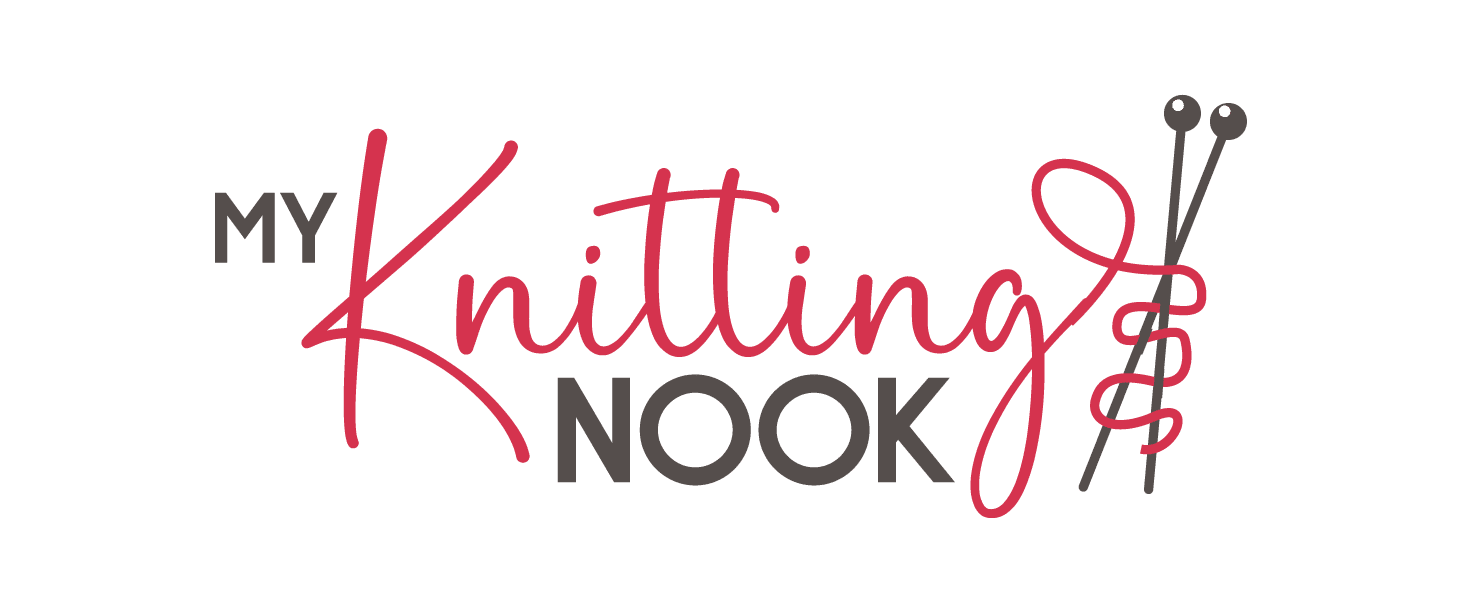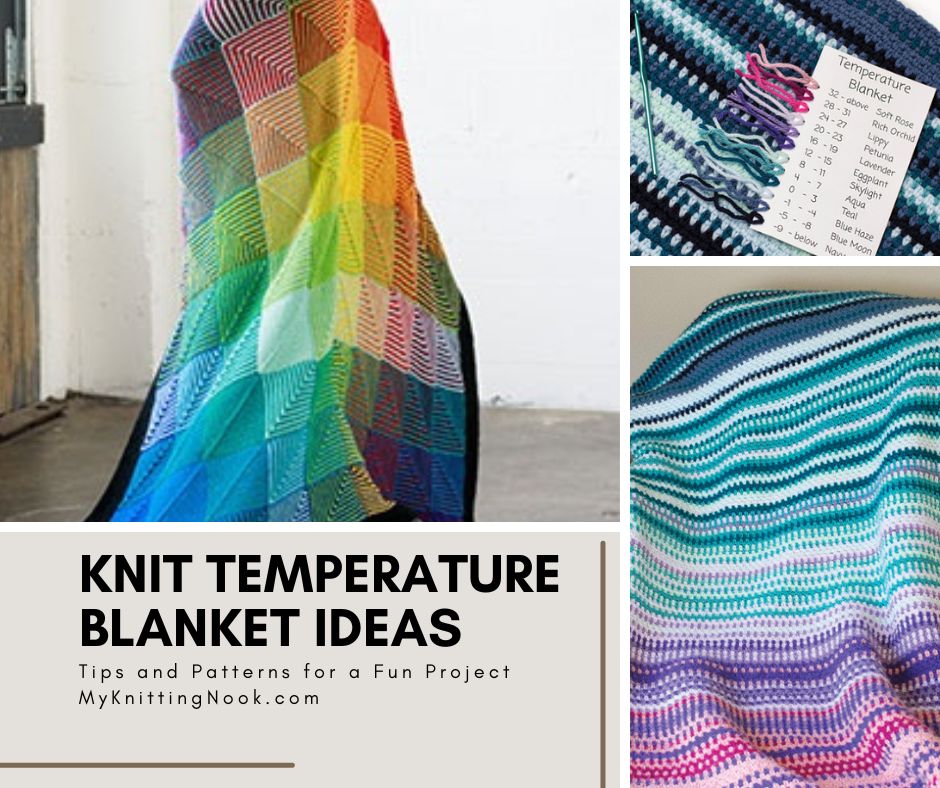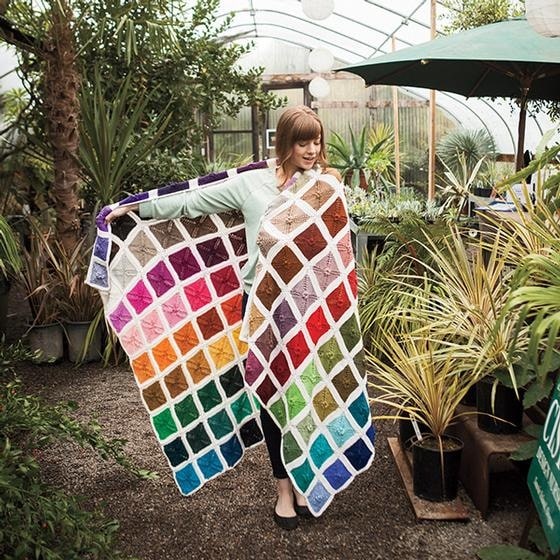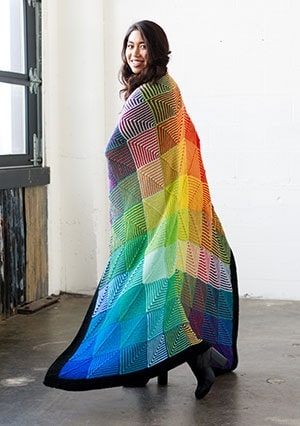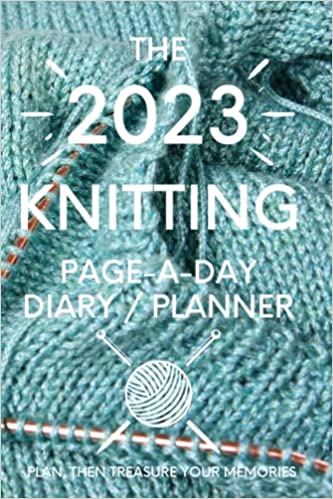A knit temperature blanket is a fun project that is perfect for anyone. From beginner knitters, to advanced, here are some ideas for how to make the perfect scarf, wrap, or blanket.
What is a Knit Temperature Blanket
A knit temperature blanket is a multi-color blanket that is based on the daily high temperatures in your area. Essentially it is a snapshot of the weather over a specific period of time. Many people tend to kick-off the new year by picking up their knitting needles, or crochet hook, to start a project that tracks the temperatures in their area over the whole year. They start on January 1st and continue the project all the way to the end of the year. But a temperature blanket can actually be knit anytime, so you could start the temperature project any day of the year.
You could also knit or crochet a historical temperature blanket. For example, a blanket based on the range of temperatures during your child's birth year. Or, any special year like when a child graduates or gets married. What a special gift to track an entire year of that person's life and give them a keepsake that will be with them for the rest of their life.
Another type of temperature blanket is one that track's climate change. Your first temperature blanket could be a historical blanket based on daily temperatures from years ago. And, then a current blanket showing how the average temperature has changed so much over the years due to global warming.
For historical weather data you can go to Wunderground to get the daily temps for a particular city, state, or region.
How to Start a Temperature Blanket
The concept of a temperature blanket is to use a number of colors throughout the project. You establish a temperature range and assign a color for that range. The image below is an example of degree increments and color palette for a knit temperature scarf. For many people they choose a rainbow scheme. For example, blues for the cold winter temperatures, greens and yellows as you move through the brighter spring months. And finally, red or warmer tones for the heat of the summer months.
The fun thing about a temperature based project is that you can use any colors you'd like. For some areas of the country you may experience temperature ranges from 0 to 100. This lets you use a wide variety of colors as you may have 12 different temperature ranges. However, other areas don't have these variations so you may only need 5-6 colors. Use a color wheel to help select complementary colors that work well together.
If you aren't a fan of projects with lots of colors. Or, you think that the rainbow effect isn't your style, you can choose colors that offer more of an ombre, or gradient effect. For instance, let's say you want to a knit temperature blanket in shades of blue. You could start with navy blue for the coldest temperature and go with lighter shades as it gets warmer. Or, branch out and use different variants of blue. Like turquoise, teal, etc.
Types of Temperature Projects to Knit or Crochet
While a knit temperature blanket may be one of the most popular types of projects, there are other options. This can mean varying the size of the blanket to fit your knitting style. You can opt for a full-size blanket with hundreds of stitches per row. Or, stick with a smaller project like a lap blanket or baby blanket. This gives you a more manageable project that won't take as much time.
Another option is to make a knit temperature scarf, or wrap. Here's an example of one using the same colors outlined in the picture above.
Best Yarn For Temperature Blanket or Scarf
One of the nice things about knitting a blanket is that it's a very forgiving project. You really don't have to worry about getting an exact gauge, unless you're trying for a very specific blanket size. But if you're more flexible, you can easily use any yarn weight and just adjust the needle sizes if needed.
Some things to consider when you choose a yarn for a knit temperature blanket:
- Do you want it to be machine washable?
- Is it for a baby where you may want organic, or super soft yarn?
- How heavy would you like the blanket to be?
- What is your budget?
I personally prefer a machine washable yarn when knitting something like a blanket. This way if it's getting lots of use, you can throw it in the wash and give it a gentle wash. I hate to hand wash my knits, and trying to hand wash a big blanket would be a big pain.
When choosing a yarn, think about how heavy you would like it to be. If you live in a cold climate and want something to keep you nice and warm, you may want to choose wool. But, if you just want something that's more like a lightweight throw blanket, then choose a lighter weight yarn.
When you knit a temperature blanket, it can end-up being a big project. With 200+ stitches and over 700 rows of knitting, knitting a blanket of this size requires a lot of yarn. So think about your budget when choosing the yarn. You may want to opt for a less expensive acrylic yarn so that you can knit a beautiful blanket without breaking the bank.
This acrylic yarn bundle on Amazon is one idea. It comes in several color schemes and with 10 skeins of yarn for under $20, you can't beat the price.
Knit Temperature Blanket Pattern
The premise behind a knit temperature blanket is that you knit one or two rows per day. Some people like to do one row in the low temperature of the day, with a second row in the color representing the high temp for the day. This gives you an excuse to knit every day. As a soothing and therapeutic hobby, a knit temperature scarf or blanket is a fun way to get your knitting in every day.
Most of the knitting patterns that you'll come across for a temperature blanket are very basic. Since the idea is to get you knitting every day, and to show off a range of colors, doing a basic garter stitch pattern is what many do. And garter stitch is easy because you're just knitting every row. It also looks great because unlike stockinette stitch, the ends won't curl up on you.
The Craft Warehouse has a free printable resource sheet that helps you track the temperatures and they have a color chart too. This temperature chart is a great starting point for your crochet or knit temperature blanket.
Alternative Pattern Ideas for Temperature Blanket
As I mentioned above, the point of this type of project is to get yourself knitting every day. But be realistic, will you actually knit every day? When you are deciding what type of project to start, think about your knitting style and how much time you can allocate each week. Do you only have 10 minutes a day to knit? Or, are you able to set aside a full hour each day? Also think about what makes you happy when you knit. Will knitting every row get boring? Maybe a simple adjustment like using a moss stitch instead will help.
Although a knit temperature blanket is often a daily task for many knitters, you can structure the project differently. So if you only get a chance to knit on the weekends, you'll want to figure that you'll have a full week's worth of knitting to finish each week. You would still track the daily temperature, but instead of knitting each day you would just knit a bunch of days in one sitting. Looking at it this way can help you choose the perfect project. Going with a knit temperature scarf may be a better choice if you don't have as much time to knit, or if you need the flexibility of knitting in bunches.
When you think about your project, think about what type of knitting you'd like to do. Do you want to knit a garter stitch pattern that allows you to knit while you're watching TV? A project that you can knit anytime and anywhere without having to keep track of a pattern with multiple rows in it? Or, do you want to use this as an opportunity to try something new?
The knit temperature blanket patterns that I've seen are all vary basic. Some throw in a slight variation to establish a break between two months. But, other than that it's usually mostly knitting (or purling if you prefer a Portuguese knitting technique like I use). But what if you used this project as an opportunity to try something new?
One idea I have is to use a chevron pattern, or ripple stitch. I have the 200 Ripple Stitch Patterns Book and it has so many easy patterns that are perfect for colorful blankets. I think that especially for making a lap blanket, or scarf, it would be fun to create your own design using one of the patterns in the book. After all, there's no shaping involved. Simply choose how many stitches you want and start knitting. You can change colors based on the corresponding yarn colors for the temperature range you choose.
Another alternative pattern idea for a knit temperature blanket is the FREE pattern for the palette blanket shown below. This pattern is available from Knit Picks to either knit or crochet. And while this may not be a typical temperature blanket pattern, I think it's a great way to get creative.
How to Adjust Patterns for Your Project
When looking at the palette blanket above, or the hue shift pattern below, there are a couple of ways that you could make these patterns work for your crochet or knit temperature blanket.
The Hue Shift Afghan Kit is available from Knit Picks through their website, or sold by Knit Picks on Amazon. There are 4 different color palettes available and at around $40 this kit is a great price.
For the palette blanket pattern and the hue shift pattern, you could do the squares based on the temperature for the day, week, or month. That way you don't have to worry about a color for each day, but you could average out the temperature for a week and choose the color based on that average. I think that the palette pattern really lends itself to this technique. I think that this is also helpful if you want to make a crochet blanket using granny squares.
I think that these alternative knit temperature blanket ideas are helpful for people who live in areas where there is not as much temperature variation. I live in Boston so I can see temperatures from below zero to above 100 throughout the course of a year. However, that doesn't mean that we don't get stretches where the temperatures are pretty consistent. By going with squares instead of rows, I could knit a blanket based on temperature trends over days (or weeks).
Here's another tip if you live in an area where there isn't as much temperature variation. Simply adjust the degree increments that you use for your color chart. For example, instead of changing colors every 10 degrees, make it shorter increments like 4-5. The beauty of this type of project is that you can truly make it your own. So if you want your own temperature blanket to only have 5 colors in it, then simply figure out the typical temperature range per year, divide by 5 and this will tell you how many degrees to use for each color.
When setting up your color chart, you also don't have to use the same increments throughout. Maybe you want to use 9 degree increments during the winter because you live in an area that sees a lot of temperature variation from day to day and you know that you'll get some good color changes. But, maybe once summer hits your temps are always in the same 10 degree range. This would give you a large section of the blanket with just one color. So for those months you could adjust your chart and change colors every 2-3 degrees instead.
Knit a Mood Blanket
When thinking about ideas for different types of a knit temperature blanket, it got me thinking about a mood blanket. Rather than changing colors based on the temperature per day, you could knit a color based on your mood. Or, maybe you focus on weather conditions and add in some special slip stitches for a pattern to reflect whether it's sunny, rainy, or snowy. Maybe there aren't as many colors and variations involved, but this may be more enjoyable for some.
Journaling Through Knitting
Knitting is a relaxing and therapeutic activity for so many of us. I often hear doctors recommend journaling as a tool to help with depression, anxiety, sleeping issues, and more. For some people writing in a journal every day is part of their normal routine. While for others, like me, journaling has never really been something that I've been able to do on a regular basis. So how about using your knitting as a way to journal instead?
I think that there are two different ways that knitting can help with journaling. First, you have to keep a log of the day's temperature for this project, so why not add a brief section where you include your thoughts for the day. Maybe it's as simple as describing your mood. Start small just to get in the habit of keeping a daily journal, and as the project progresses you may find that you want to write more.
A second type of journaling that you could do with this project is to note how you feel after knitting. Maybe write down what your mood is when you start to work on your knit temperature blanket for the day, and then write how your mood changed. Again, it's a simple way to jot down your thoughts and tap into your feelings without having to sit and write a big journal entry.
Knit Temperature Blanket Summary
A crochet temperature blanket, or knit temperature blanket, is a fun project that gives you a lot of flexibility to turn it into a project that fits your needs. And, your knitting style. Whether you opt for a portable scarf that you can knit while you're on the go. Or, choose a large, full-size blanket. There are so many options for how you can customize this project and make it your own. You can get creative with the yarns and pattern you choose. Or, keep it simple, be like Nemo and just keep knitting, just keep knitting…
